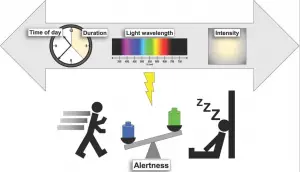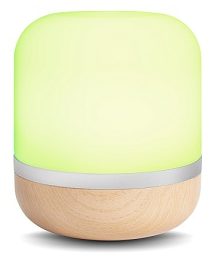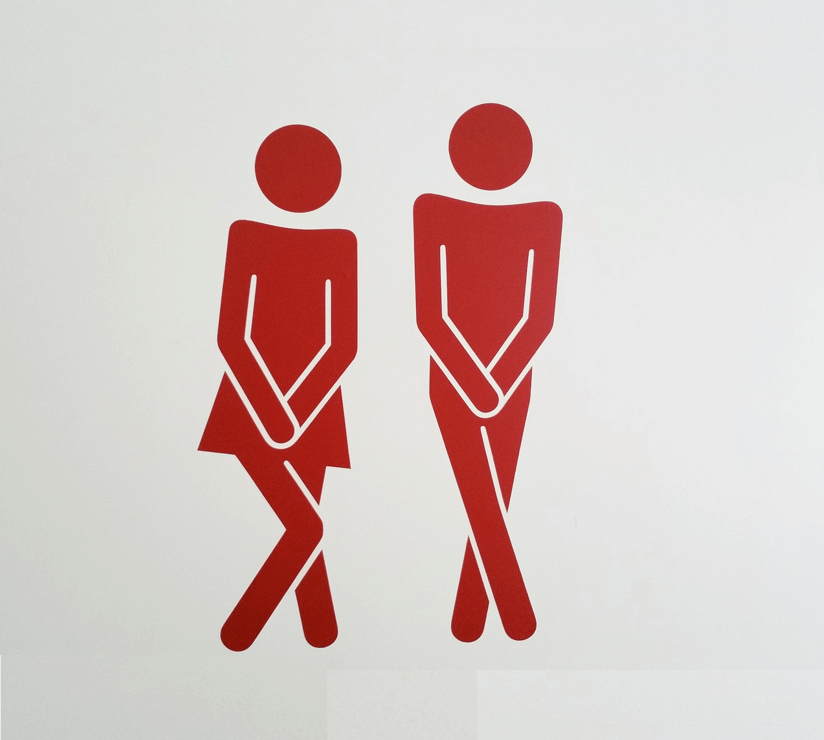Every day, you are exposed to natural white light which contains all the colours of the spectrum: red, orange, yellow, green, blue, indigo and violet. It bathes you in a sea of colour, although this is only obvious when light is split with a prism or atmospheric water to create a dazzling rainbow. These colours have an astonishing effect on wellbeing, and can reset your circadian biorhythms, stimulate the release of brain neurotransmitters and hormones, and have profound effects on mood, alertness, performance and behaviour.
Using coloured lights in the home can influence your mood and emotions, helping to keep you more alert, or promoting relaxation and a better night’s sleep. These responses are partly linked with a type of light receptor in the back of the eye that was discovered in 1998. Known as melanopsin retinal ganglion cells, these photoreceptors send signals to the brain’s master ‘clock’, the suprachiasmatic nucleus, and to other areas of the brain that regulate activity levels, heart rate, body temperature, sleep, fear, and even higher functions such as language, analytic thought and long-term memory.
Blue light is alerting and wakes you up
Melanopsin retinal ganglion cells which regulate alertness and sleep cycles are uniquely sensitive to blue light. Scientists believe this is because blue wavelengths of light penetrate the surface of the oceans, where light and light receptors first evolved, more easily than other visible wavelengths.
Many studies show that blue-enriched light is an arousing stimulus that improves alertness and performance while decreasing sleepiness.
Researchers from Brigham and Women’s Hospital have also found that exposure to blue light can improve alertness and overcome fatigue. Researchers used specialized light equipment to compare the effects of a daily exposure to 6.5 hours of either blue or green light on alertness and performance in 16 volunteers.
Those exposed to blue light consistently rated themselves as less sleepy, and had faster reaction times and fewer lapses in attention during performance testing than those exposed to green light. Changes in brain wave activity (reduced alpha, theta, and low-frequency activity) also indicated they were more alert.
Other researchers have found that exposure to blue light suppresses levels of melatonin (the sleep inducing hormone) for around twice as long as exposure to green light. Studies also show that exposure to blue light at night suppresses the secretion of melatonin more powerfully than white light. This is why sleep experts advise that you avoid exposure to blue light from screens (eg mobile phones, tablet devices) during the two to three hours before going to bed if you want a better night’s sleep.
Blue light is valuable for increasing wakefulness during the day, however. A study involving 94 office workers showed that enriching work environments with blue-enriched white light not only increased alertness and performance, but also improved sleep quality during the following night. Blue-light enrichment improved the ability to focus and concentrate and also reduced evening fatigue and irritability.
Recent evidence suggests that prolonged blue light exposure may also lower blood pressure by enhancing the natural release of nitric oxide in the skin – a chemical that dilates blood vessels to lower a high blood pressure.
Green light is restful and calms you down

Green is consider the most calming colour in nature and is used to reduce anxiety and tension. This effect contributes to the healing effects of green foliage plants which are used in clinics and hospitals to reduce anxiety and improve recovery from stress and ill-health.
Researchers have found that exposure to green light has a sleep inducing effect compared with blue light. Green light exposure may also lower blood pressure
Colours and emotions
Robert Plutchik, a professor of psychology, developed a theory of emotion which equated different colours to different emotions.
 Yellow is associated with happiness, joy and optimism, and is used to promote clear thinking, self-control, optimism, inner strength and to resolve unaddressed emotions and feelings.
Yellow is associated with happiness, joy and optimism, and is used to promote clear thinking, self-control, optimism, inner strength and to resolve unaddressed emotions and feelings.
Orange is associated with vigilance and interest and is often used to increase energy levels.
Pink is associated with negative feelings, yet bubble-gum pink has been used to calm over-active children. Wearing rose-tinted spectacles has also been found to reduce the incidence of migraine attacks.
Red is the warmest colour and has a stimulating effect which increases circulation, blood pressure and is associated with anger and feelings of stress. Some people who are exposed to red light show the same alerting circadian responses as those who are exposed to bright white light. However, for most people, red light does not affect alertness and initial studies suggest that exposure to red light at night may have effects on the brain that improve mood and reduce the chance of developing depression.
Indigo has negative emotional connotations associated with sadness, although it has been used to calm anger and lower stress-related high blood pressure.
Violet is also used to calm anxiety.
Once you’ve tried using colour lighting in your home and experienced the beneficial effects on wellbeing, you will never go back to plain white!
iDual LED lighting
Smart LED lighting brand, iDual, allows you to change the colour of your light bulb depending on your mood with 16 different preset mood options, or blend your own shade to create a uniquely personal atmosphere.. All the lights in the range are controlled by one remote so you can control the colour temperature and light intensity around your home with a simple set up – just plug, point and play. Mood options include Party, Sunset, Forest, Ocean, Romance and my favourite, flickering Fireplace.
Use the colour wheel to switch between full colour, pastel colours, candle light, or different shades of white, such as warm white for relaxing, bright white light for working or even a light for waking up in the morning.
Available for indoors or outdoors, as a light bulb, table lamp, projector, clip light, table floor lamp, ceiling lamp and more.
The WiZ experience
The WiZ light system is one of the most advanced smart home lighting systems available. WiZ lights are designed to work on 2.4GHz Wi-Fi (the most common one) and is scalable, so you can add as many lights as you need to create a uniquely colourful home, with different effects in different rooms. Pair as many lights as you want to the smart phone app for iOS and Android. You can also control your lights through an Infrared remote (WiZmote which is sold separately) or through voice control via Amazon Alexa, Google Assistant and Google Home.
 WiZ offers an astonishing 64000 different shades of white, 16 million colours plus preset well-being modes. For maximum brightness, select Daylight mode with 100% brightness, or for more relaxed lighting, try dynamic modes such as Fireplace or Forest, or static modes such as Warm White or Cozy.
WiZ offers an astonishing 64000 different shades of white, 16 million colours plus preset well-being modes. For maximum brightness, select Daylight mode with 100% brightness, or for more relaxed lighting, try dynamic modes such as Fireplace or Forest, or static modes such as Warm White or Cozy.
Most dynamic light modes (except Pastel) are randomised, so if two lights next to each other are in the same mode, they de-synchronize on purpose to provide a more natural and immersive experience; you can of course synchronise them if you prefer. You can also set lights to Fade-in and Fade-out, and if for any reason you need instant full brightness, just set Fade-in to zero.
Save custom colours and whites as Favorites, and set light modes for a gentle wake-up or relaxing bedtime. WiZ Moments even allow you to save different light modes and custom colours by tapping ‘Snap this moment’ to save the current settings of all the lights in the room. You can then recall them at anytime to bring your favorite moods back.
Kate Baker, lighting advisor at WiZ Connected Lights, gives some tips on how to make the most of the lighting in your home.
Want to create a softer, more relaxed ambience in your living room? Choose a warm white
Warm white offers your living room the perfect cosy and calming atmosphere after a long day at work. It’s thought this shade’s gentle glow can help signal your body to unwind at the end of the evening and to prepare itself for a good night’s rest. Increasing the ‘warmth’ of the light helps you feel more relaxed overall.
Finding it hard to wake up during the winter months? Switch on a cold white to get alert
The blue undertones of cold white light stimulate the brain more than other shades and therefore encourage you to feel more alert. Think of the fluorescent lighting in offices, which are chosen due to their ability to promote enhanced concentration and productivity. Switching on a colder shade of white light in your bedroom in the morning has the same effect, helping you snap out of sleep mode more quickly. Ideal for embarking on your morning routine feeling more awake!

Need cheering up? Surround yourself with a soft yellow
Our recent research revealed Brits felt yellow made them happiest; the advantage of connected lighting systems is that there are so many shades within it to create a haven that works for you. Try a lamp with a soft adjustable glow by your bedside, such as the WiZ Hero.
Pure yellow is the brightest colour of the visible spectrum and captures our attention more than any other colour and is often associated with optimism and creativity.
Feeling anxious? Seek a calming mint green
The impact of different hues of green shouldn’t be underestimated. A muted, pale green, for example, can make you feel energised and well-rested, whilst a brighter green can indicate growth and hope.
Green’s enduring antipathy to bright red also imbues it with a sense of safety and reduced anxiety
Book your ideal wakeup call
A wide range of alarm clocks are available to wake you naturally by simulating a gradually brightening sunrise to help regulate your sleep cycle. These can wake you gently and by a slowly brightening light, with an FM radio that activates at your selected time, or choose to wake to nature sounds such as a dawn chorus of birds, flowing water, or chirping cicadas.
The LifeMax Soothing Colours Dawn Simulator Alarm Clock lets you set the light to change colour naturally, or you can control it manually with a touch-control that has ten dimmer settings. You can select your own light colour, such as shades of restful green or lilac, and it’s ideal as a bedside light or a night-light.
Image credit: wikimedia; machine_elf_1735/wikimedia; environmental health perspectives;





